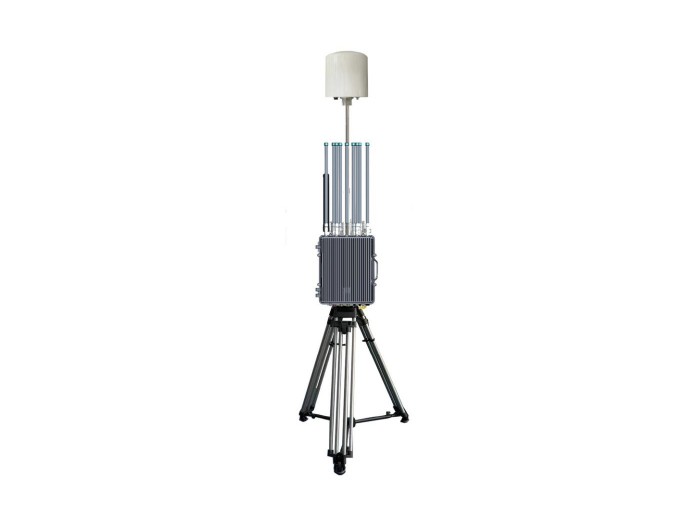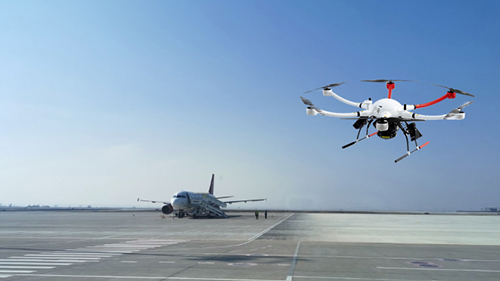RF Drone Detector for Commercial Aircraft: Enhancing Aviation Security
The increasing presence of drones poses a significant challenge to commercial aviation safety. As drones become more accessible globally, incidents of near-misses and inadvertent airspace violations around airports have surged, raising concerns for airlines and regulatory bodies. According to the Federal Aviation Administration (FAA), drone-related sightings near commercial airports increased by over 70% in recent years. This growing threat underscores the urgent need for advanced detection systems like RF drone detectors for commercial aircraft. These cutting-edge devices help airlines proactively identify and mitigate risks associated with unauthorized drone activity, ensuring passenger safety and preventing costly operational disruptions. This article explores the technology behind RF drone detection, the benefits for commercial aircraft, and emerging industry trends shaping the future of aviation security.
What Is an RF Drone Detector and How Does It Work on Commercial Aircraft?
An RF drone detector is a sophisticated system designed to identify and track radio frequency (RF) signals emitted by drones' communication links. Since drones typically operate via remote control or autonomous commands over RF channels, these detectors scan designated frequency bands to detect, classify, and locate drones nearby. For commercial aircraft, particularly during critical flight phases like takeoff and landing, onboard or ground-based RF drone detection enhances situational awareness by early warning of potential threats.
Typically, the detector monitors common drone control frequencies, such as 2.4 GHz and 5.8 GHz bands, which are widely used by consumer and commercial drones. Once a drone signal is intercepted, the system analyzes signal strength and patterns to determine the drone’s proximity and possible identification. Integration with aircraft avionics or airport security infrastructure facilitates timely alerts to pilots and ground control teams. For example, a recent implementation at a major international airport demonstrated a 40% reduction in drone-related disruptions after deploying RF drone detection combined with mitigation protocols.
This technology complements other detection mechanisms such as radar and optical sensors, offering a layered defense approach that improves detection accuracy and reduces false alarms. Given the dynamic flight environment commercial aircraft operate in, RF drone detectors serve as a critical proactive tool for safeguarding airspace against unauthorized drone incursions.
Benefits of Deploying RF Drone Detectors on Commercial Aircraft
Incorporating RF drone detectors into commercial aviation security delivers multiple advantages that address pressing operational and safety challenges. Firstly, enhanced threat detection capability protects aircraft from possible drone collisions or interference, which can compromise onboard systems or disrupt flight integrity. According to a 2023 aviation safety report, more than 60% of airports surveyed identified drone interference as a rising safety concern. Having reliable detection systems enables faster decision-making to avoid dangerous encounters.
Secondly, these detectors reduce costly delays and flight cancellations caused by drone sightings. Airports equipped with RF detection systems have reported a 30% improvement in on-time performance by mitigating unnecessary ground holds and diversions. This improves passenger experience and optimizes airline operational efficiency.
Furthermore, RF detection helps regulatory compliance. Aviation authorities globally are introducing drone traffic management (DTM) policies requiring operators and airlines to monitor for unauthorized drones actively. Implementing RF drone detectors aligns airlines with regulatory mandates and industry best practices, supporting safer skies and reinforcing public trust.
Finally, installing RF drone detection technology delivers competitive differentiation. Airlines and airports demonstrating advanced security measures establish stronger brand authority and customer confidence, essential in an increasingly security-conscious market.
Applications and Integration of RF Drone Detectors in Commercial Aviation
The application of RF drone detectors in commercial aviation spans from onboard aircraft systems to airport perimeters and air traffic control facilities. Onboard integration allows pilots to receive real-time alerts about drone presence during critical flight stages, enabling corrective maneuvers or coordination with air traffic controllers. For instance, some leading commercial aircraft manufacturers are incorporating RF detection modules within cockpit instrumentation to enhance pilot situational awareness.
Ground-based RF detection is commonly installed around airport boundaries, runways, and sensitive zones to detect drone ingress before they reach flight paths. Data collected is then fed to airport security operations centers and law enforcement for immediate response. A practical example includes London Heathrow Airport employing a multi-sensor approach combining RF detection with radar and visual systems to provide comprehensive drone monitoring and rapid interdiction capabilities.

Moreover, advancements in AI-powered signal processing allow these systems to differentiate benign RF noise from genuine drone signals, lowering false positives significantly. Integration with national aviation safety networks helps aggregate data for large-scale airspace management and predictive analytics, creating a more resilient ecosystem against drone threats.
As the drone ecosystem evolves with emerging technologies such as BVLOS (Beyond Visual Line Of Sight) operations, RF drone detectors will remain pivotal in managing complex aerial environments, fostering safer commercial flight experiences worldwide.
Industry Trends and Future Outlook of RF Drone Detection in Commercial Aviation
The global push for enhanced aviation security is driving rapid innovation within the RF drone detection segment. Forecasts project the market for drone detection systems in aviation to grow at a compound annual growth rate (CAGR) of over 12% through 2027, fueled by regulatory mandates and rising drone adoption. The increasing sophistication of drones demands equally advanced detection technologies capable of coping with stealthier, faster, and more autonomous unmanned aerial vehicles.
Emerging trends include multi-sensor fusion approaches combining RF, radar, acoustic, and visual data to improve detection reliability under varied environmental conditions. Additionally, integration with machine learning algorithms refines threat classification and response strategies in real-time. Key industry players are investing heavily in developing lightweight, low-power RF detection modules suitable for retrofitting existing commercial aircraft.
The harmonization of international aviation standards and drone regulations will further accelerate adoption of RF drone detectors, promoting interoperable security protocols globally. Furthermore, increased public awareness around aviation safety strengthens stakeholder commitment to implementing robust counter-drone technologies.
In summary, the future landscape for RF drone detection in commercial aircraft is promising, combining technological advancements and regulatory frameworks to ensure safer skies for passengers and crew.
Key Recommendations for Implementing RF Drone Detectors in Commercial Aircraft Security
- Conduct comprehensive risk assessments: Evaluate specific operational environments and flight routes to determine optimal RF drone detection deployment strategies.
- Invest in multi-sensor integration: Combine RF detection with radar and visual systems for a robust, layered defense approach against diverse drone threats.
- Engage with regulatory bodies: Stay informed about evolving drone regulations and ensure detection systems comply with current aviation standards.
- Train personnel effectively: Provide pilots, air traffic controllers, and security teams with training on using and interpreting RF drone detection alerts.
- Visit our website or contact us: For tailored solutions and professional consultation on integrating RF drone detectors into your commercial aviation operations, reach out today!
Conclusion
The deployment of RF drone detectors for commercial aircraft is no longer optional but a critical component of contemporary aviation security. By enabling early detection and response to unauthorized drone incursions, these systems protect passengers, reduce operational disruptions, and ensure regulatory compliance. Our company stands at the forefront of delivering cutting-edge RF drone detection technology tailored for commercial aviation needs. Want to enhance your airspace security and safeguard your fleet? Visit our website now or contact us for a free consultation and learn how our solutions can keep your flights safe and secure.

















